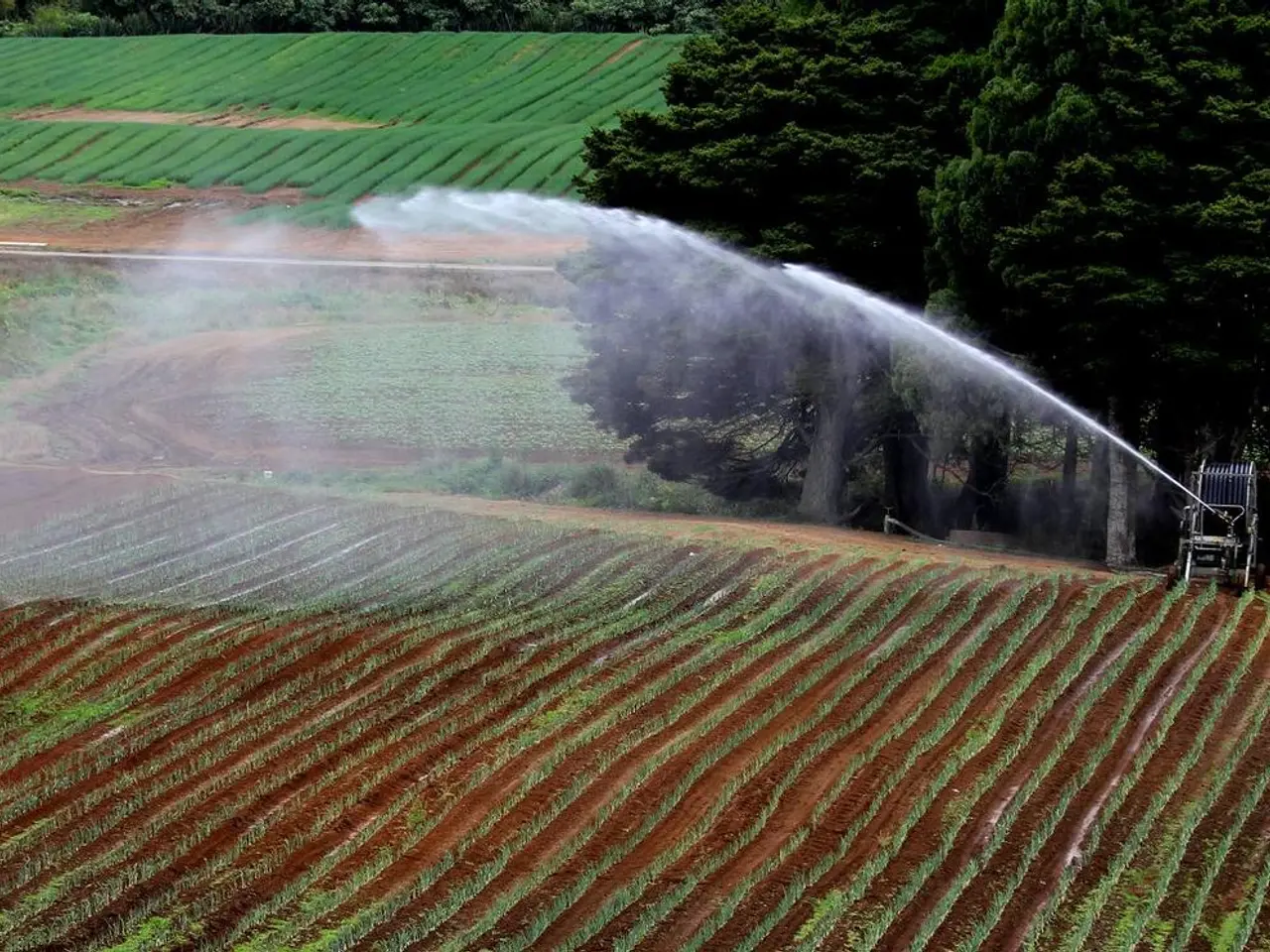Future Prospects of Organic Farming: An Analysis
The global organic farming market is experiencing significant growth, driven by rising consumer demand for healthier and environmentally friendly products. This trend is particularly prevalent in North America and Europe, where the U.S. organic food market is projected to more than triple from $88 billion in 2024 to $256 billion by 2034, with an 11%+ Compound Annual Growth Rate (CAGR).
This shift towards organic food is influenced by factors such as growing awareness of organic food benefits, including health advantages and environmental concerns, as well as a shift towards vegan diets and clean eating.
Government support is substantial, particularly in Europe under policies like the EU Farm to Fork strategy, which aims to have at least 25% of agricultural land organically farmed by 2030. In the U.S., the USDA supports organic agriculture with certification programs and funding, including $60 million allocated for organic farming growth and organic fertilizers subsidies.
Environmental sustainability remains a core driver as organic farming practices reduce harmful chemical inputs and promote soil health and biodiversity. Organic inputs such as biocontrol agents, biostimulants, and biofertilizers are increasingly adopted to replace synthetic pesticides and fertilizers, supported by regulatory restrictions on chemicals.
However, production costs in organic farming are generally higher due to more labor-intensive practices and input costs. There is also a challenge of lower yields compared to conventional farming, although research and development efforts focus on improving this gap through innovative fertilizers, pest control, and farming technologies.
Key areas of research and development include developing more efficient organic inputs, precision organic farming technologies, and integrated pest management techniques to enhance yield and cost-effectiveness without compromising organic standards.
Innovations shaping the future include the adoption of precision farming, microbial biocontrol agents, and enhanced biostimulants/biofertilizers. These innovations aim to reduce reliance on chemical inputs and improve productivity sustainably.
Some market segments face price resistance in certain organic product categories due to cost-premium issues, but overall demand and supply chain dynamics continue evolving with greater interest in regenerative and local organic practices.
In countries like India, the government has moved away from drives like the Paramparagat Krishi Vikas Yojana (PKVY) to encourage common-making practices. Innovative work is needed to challenge conventional farming practices and make organic farming more efficient and profitable.
Consumer demand for organic products is growing due to potential health benefits, such as reduced pesticide exposure and higher nutritional content. Environmental sustainability is a key benefit of organic farming, as it helps maintain soil health, reduce harmful substances, and protect biodiversity. Improvements in organic pest control, such as the use of biopesticides and beneficial insects, are crucial for reducing yield gaps.
Government initiatives are supporting conventional agriculture, and programs are being implemented to encourage organic farming practices. As the global organic farming market continues to grow, it is expected to reshape global food systems towards more sustainable production methods over the coming decade.
- The growing demand for healthier and environmentally friendly products has driven the adoption of organic farming, particularly in the areas of health-and-wellness and lifestyle, with consumers seeking reduced pesticide exposure and higher nutritional content in their food-and-drink choices.
- Water management is a critical aspect of organic farming, as the practice favors natural methods that promote soil health, which in turn helps conserve water and maintain plant health, playing a significant role in environmental-science considerations.
- Science plays a crucial role in the development of organic farming, with research and development focusing on creating more efficient organic inputs, precision organic farming technologies, and integrated pest management techniques, aiming to improve productivity, sustainability, and cost-effectiveness without compromising organic standards in the field of environmental-science, food-and-drink, and lifestyle sectors.




